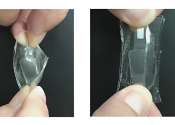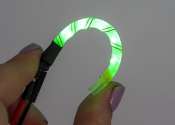Flexible electronics researchers develop a completely stretchy lithium-ion battery
When you think of a battery, you probably don't think of stretchy material. But batteries will need this shape-shifting quality to be incorporated into flexible electronics, which are gaining traction for wearable health ...
Jul 17, 2024
0
79









